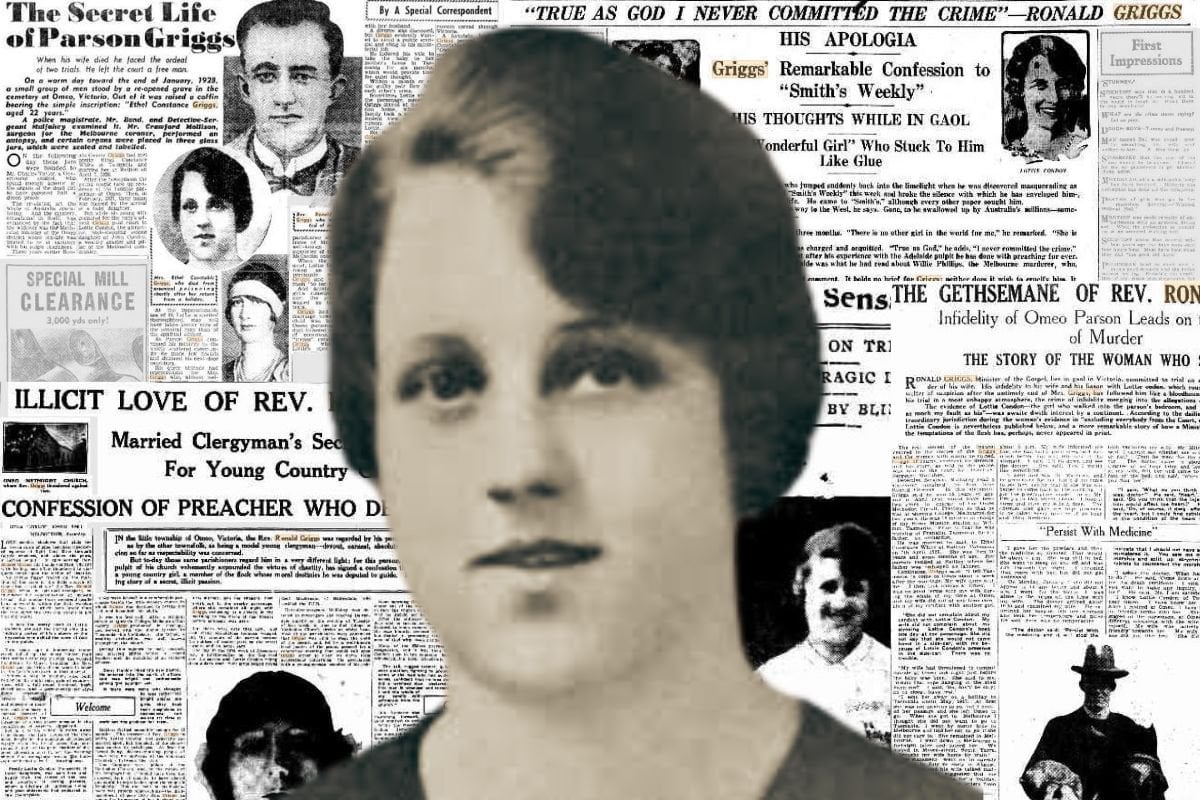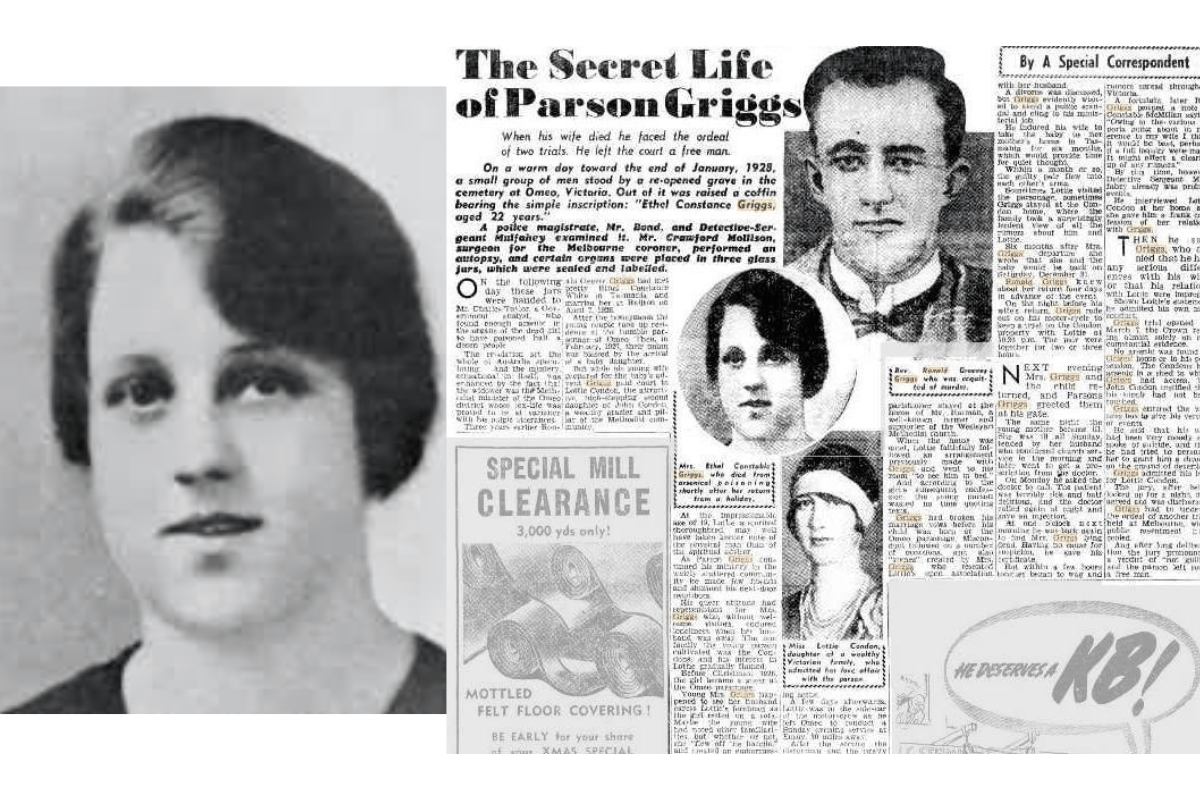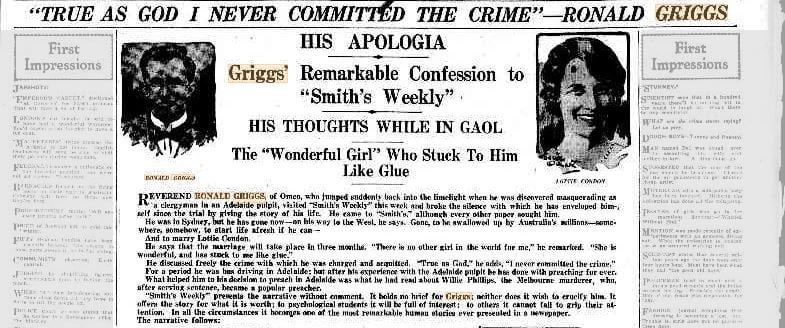
A little over 48 hours after returning home to Victoria with her baby daughter, Ethel Griggs was confirmed dead.
She'd been in Tasmania with family for six months after asking her husband, Ronald Griggs, for a divorce. She'd accused him of cheating on her with a local girl from his church, who he insisted was just a friend.
To divorce would mean the end of Ronald's dream of becoming a Methodist minister, so instead he told her to go home for a while to give them both time to think.
But while Ethel used the time to make plans to move forward in her marriage, her husband continued to sleep with and secretly date the young woman he'd been cheating with, Lottie Condon.
Nonetheless, Ronald was there to greet Ethel and their daughter Alwyn when they arrived back home to Omeo, on New Year's Eve, 1927.
Watch: True Crime Conversations trailer. Post continues below.
He served his wife some tea, cheese sandwiches and buttered bread and very soon after she started vomiting.
She didn't stop vomiting, and remained bedridden for the next two days.
Ronald found her unresponsive in the early hours of January 3, and by the following day she'd already been farewelled and buried with her cause of death attributed to heart failure.


